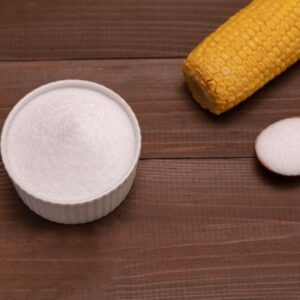
New Alzheimer's Test Offers Cheap, Accurate Results
- Groundbreaking new Alzheimer’s research gets good results without invasive procedures
- Discover how bad-tasting food inspired researchers to design this simple test
- Leave hefty medical bills behind! This test can give you valuable results with a tiny price tag. Find out more…
Dear Living Well Daily Reader,
What’s that smell?
If you answered chocolate, coffee or cinnamon, then your brain may be in good shape.
You see, a new study done by Columbia University Medical Center shows that medical professionals could one day screen patients for Alzheimer’s through smell tests.
To be more exact, the ability to identify familiar smells like the ones listed above is a sign of a healthy brain.
In contrast, research shows that folks who are 60 years or older and unable to identify common smells in an odor detection test are more likely to already be experiencing memory and thinking problems or will eventually develop them.
And the results are shockingly accurate, noninvasive and, best of all, cheap.
![]() Scratch ’N’ Sniff
Scratch ’N’ Sniff
Current testing methods for the earliest stages of Alzheimer’s include PET scans and spinal taps. Not only are these tests uncomfortable, but they can also be very expensive, due to the fact they often aren’t covered by insurance.
But this new test, called the University of Pennsylvania Smell Identification Test, or UPSIT, may change that.
According to Columbia neurologist Dr. William Kreisl, “The whole idea is to create tests that a general clinician can use in an office setting. It’s basically a set of cards. And each card has a little scratch-and-sniff test on it.”
The cards have familiar odors like licorice, coffee, chocolate and cinnamon.
The data from the study indicate that folks who aren’t able to identify the odors are three times more likely to experience memory issues than others.
But even more amazing — this simple sniff test “was able to predict memory decline in older adults about as well as the PET scan or spinal tap,” reports Kreisl.
The test was inspired in part by a common patient complaint observed by doctors — bad-tasting food. Alzheimer’s patients often complain that food doesn’t taste good. This is due to the fact that these patients have lost the ability to smell their food.
Kreisl says this isn’t surprising since odors from the nose are processed in a portion of the brain that is first to fall victim to Alzheimer’s.
While these tests have proven themselves to be helpful tools, they aren’t perfect yet. Other brain disorders can also affect your sense of smell: things like smoking, normal aging and head injuries.
But in most cases, this new sniff test will offer a cheaper and more comfortable diagnosis.
“The UPSIT can be performed in an office setting very easily, takes about 20 minutes to perform, it’s a 40-item test, costs $20 to buy the kit,” Kreisl explained.
To further their research, doctors hope to follow volunteers without dementia to see how early the sniff test can predict the onset of Alzheimer’s.
As of now, it seems the sniff test is still in its developmental stages and not widely available. However, with further research, this tool may one day be the easiest and most affordable diagnostic test for Alzheimer’s.
Live well,

Natalie Moore
Managing editor, Living Well Daily
Sources
[2] A Sniff Test For Alzheimer’s Checks For The Ability To Identify Odors
[3] UPSIT ‘Smell Test’ Could Aid In Early Detection Of Alzheimer’s
Written By Natalie Moore
Natalie Moore is a dedicated health researcher with a passion for finding healthy, natural, and science-based solutions. After a decade of direct healthcare experience in western and natural medicine, she was involved in public health research before joining Living Well Daily.
View More Free Articles
This Sleep Mistake Is Doubling Your Disease Risk
Think your inconsistent bedtime is just a harmless habit? Think again. New research reveals that going to bed at different times each night isn’t just making you tired—it could be dramatically increasing your risk of serious diseases. But the key to making sure poor sleep doesn’t derail your health goals likely isn’t what you think…....
Stop Obsessing Over Diet Trends
Can we stop with the endless diet debates already? Every other week there’s a new headline shouting about which diet is best for weight loss, heart health, or diabetes. Paleo, keto, low-carb, high-protein… it’s exhausting. And now, a new meta-analysis is out comparing the Mediterranean diet, the DASH diet, and something called AHEI (that’s “Alternative...
A New Reason to Ditch Processed Junk
If you’ve ever walked the inside aisles of your local grocery store and thought, “This is all just junk,” your instincts were spot on. A new study published in the journal Thorax just added another red flag to the list of dangers linked to ultra-processed food—a 41 percent higher risk of lung cancer. That’s right....
When Being Winded on Stairs Is Serious (And When It Isn’t)
I had an athlete visit me recently because he experienced shortness of breath while climbing stairs. He is in great shape, so he was worried about what it might mean. “Doc,” he said, “I run five miles three times a week. Why am I huffing and puffing after two flights of stairs?” His concern is...
Study EXPOSES Hidden Danger Lurking in Your Car
We think of our homes and cars as safe havens. But according to a startling new study, they may be flooding your lungs with microscopic plastic particles—every single day. Researchers in France recently found that adults inhale an average of 68,000 microplastic particles daily from indoor air alone. To put that in perspective, that’s about...
Mailbag: Is Modern Food Making You Snore?
“What can cause snoring, and is there a way to correct this issue?” —Seeking Silence Hi Seeking, Snoring happens when the soft tissues in your throat relax and vibrate as air passes through during sleep. While several factors can cause snoring—from sleep position to nasal congestion—I want to share one trigger that might surprise you....
Simple Food Swap SLASHES Dementia Risk 28%
Let’s be honest… who would jump at the chance to cut their dementia risk by 28 percent. And no, you don’t need to run marathons, survive on broccoli, or learn to play the zither (whatever that is) to make it happen. All it takes is one easy swap—something that’s probably already in your refrigerator. Researchers...
This SMART Floss Exposes Hidden Health Danger
Scientists have created dental floss that doesn’t just clean between your teeth—it also tracks your stress while you’re flossing. Now, I know what you’re thinking… “Great—now even flossing is going to stress me out by telling me how stressed I am.” But this fascinating new tool from Tufts University could be a game-changer for understanding...
Is This "Safe" Sweetener Damaging Your Brain?
The headlines are alarming… “Popular Sugar Substitute Linked to Brain Cell Damage” and “Erythritol Could Damage Critical Brain Barrier” are just two of the dozens I’ve spotted recently. But before you toss every sugar-free product in your pantry, let’s take a closer look at what this study actually shows—and what it doesn’t. The latest research...
This Summer Threat Could SPIKE Your Blood Sugar
Picture this… It’s another scorching hot summer day. You crank up the air conditioning while watching the weather forecast, which predicts yet another “record-breaking” heat wave. It’s starting to feel like just another miserably uncomfortable summer. But what you might not realize is that—if you have diabetes—those rising temps could do far more damage to...









